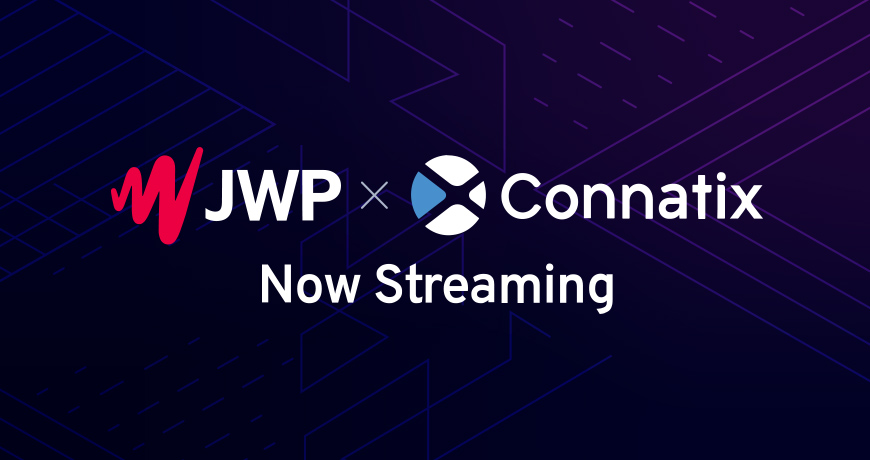End-to-end platforms have become popular again, unless you’re Google and antitrust authorities are chasing you.
Connatix and JW Player, two video monetization platforms, announced on Wednesday that they will combine to establish JWP Connatix. However, that is only a temporary moniker; a rebranding is being considered.
In July, there were initial rumors of the merger. However, Dave Otten, the CEO and co-founder of JW Player, told AdExchanger that the two businesses had been testing each other’s tires for over a year.
Connatix CEO David Kashak will take over as chairman, while Otten, who would not disclose a deal price, would take over as CEO of JWP Connatix.
READ MORE: Meta’s Favorite Mix Is Video And Generative AI
The merger’s justification is to take advantage of three trends: the unstoppable transition from linear to streaming, the publisher’s need to make money, and advertisers’ need for greater inventory quality and transparency.

According to Otten, “we think we can bring a platform business to video, which is something that, honestly, the market needs.”
According to Otten, Connatix and JW Player have comparable technologies.
Connatix offers a video ad server, supply-side platform, and contextual ad platform, while JW Player, which is integrated into millions of websites, provides technology for ingesting, rendering, and making money off of video content.
According to him, the workflow/ad tech combination makes sense since it enables broadcasters, streamers, online publishers, and advertisers to control ad distribution from the same location where they control their monetization, including on-demand and live content.
Customers of JW Player and Connatix can be upsold on more powerful video advertising and workflow technology, respectively, by JWP Connatix.
Vizio is a prime illustration.

Vizio’s streaming service, WatchFree+, uses JW Player to deliver its advertisements. The relationship is mostly one of infrastructure. However, with the prospect of more demand and improved monetization through Connatix, the new business has a chance to continue that collaboration.
READ MORE: FTC Accuses Social Media And Video Streaming Platforms Of ‘Privacy-Invasive’ Data Practices
Putting money into insights and AI
Together, JW Player and Connatix provide about 30 billion video plays each month and reach over 1 billion unique users. According to Otten, that amounts to about 150,000 years of information streamed annually.
A great deal of data about how viewers interact with video content and its advertisements is produced by all of that consumption.
For instance, JW Player’s media player allows it to view metadata related to video content, including whether and how the content is being viewed, the amount of time spent watching, and other contextual information.
Connatix, on the other hand, is able to determine which advertisement was shown at which CPM, where it was shown, and whether or not anyone actually saw it.
According to Otten, the strategy is to invest in AI to exploit this data for personalization, figuring out the right ad load, and optimizing revenue for publishers.

“I believe this to be the most underappreciated aspect of this deal, and we’ll invest a significant amount of money in it,” he stated. “It will most likely be the most crucial component we require for future success.”
Investing in business
Beyond advertising, JWP Connatix is also considering providing video monetization options.
JW Player acquired InPlayer, a subscription enablement and identity management business that assists video producers with paywall implementation and payment processing, early last year.
However, Otten said that the expansion of live shopping in markets outside of the US is “what’s really the third leg of the stool here, and it’s another big investment area for us.”
READ MORE: It Looks Like YouTube Has A Fix For Ad Blockers: Inserting Commercials Into Videos
However, adopting a hybrid strategy to monetization is the most effective method for publishers to generate revenue.
“Our main goal here is to assist publishers in determining the best mix for them, whatever that may be, so they can maximize their profits,” he stated.
JWP Connatix will spend the next six months carrying out its integration strategy, which includes combining the two product and engineering teams as a step before combining the products themselves, in addition to the rebranding that will take place the following year.

To promote the new integrated offering, the sales, marketing, and services teams are already collaborating and contacting publishers.
However, there will be some redundancies. Otten stated that a few employees from throughout the organization who have overlapping skill sets will be let go, but he would not provide exact numbers. Between 350 and 400 workers will make up JWP Connatix’s overall workforce.
Otten claims that both businesses are successful.
According to Otten, the merger was supported by both Court Square Capital Partners, who acquired a majority position in Connatix at the same time, and LLR Partners, the private equity group that spearheaded JW Player’s Series E round in 2021.
Let’s avoid ending on a pointless detail, though.
Fun fact: prior to Google’s takeover, YouTube’s original video player was called JW Player.
Here’s another one: The Dutch software engineer Jeroen Wijering, who later co-founded JW Player, is represented by the letter “JW” in “JW Player.” Wijering created the initial iteration of JW Player’s video player technology in 2005.
Radiant TV, offering to elevate your entertainment game! Movies, TV series, exclusive interviews, music, and more—download now on various devices, including iPhones, Androids, smart TVs, Apple TV, Fire Stick, and more.


